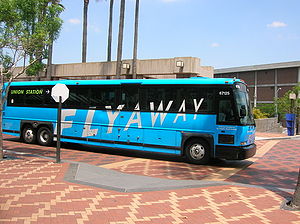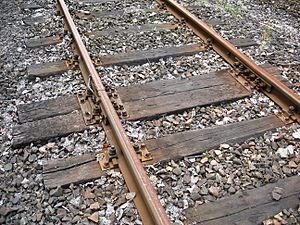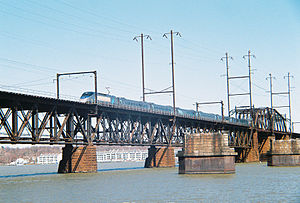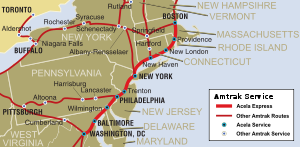
- Image via Wikipedia
For those of you who do not know, intermodal transportation is transportation that covers multiple modes of transport…bus, train, plane.
It is a significantly overlooked part of the bigger transportation picture. Why can’t plane connect to train or connect to bus? Most cities don’t look at these things as connected.
Los Angeles World Airports announced earlier this month a three-year license agreement with the City of Irvine permitting the FlyAway bus service to operate nonstop from Irvine Station in Orange County to Los Angeles International Airport (LAX). The Irvine Station is the fourth location in the FlyAway network, the others being Van Nuys, Westwood and Union Station. Together, the three handled more than 1.5 million travelers combined for the year ending in June.
Both Irvine Station and Union Station provide links to Amtrak, commuter rail, and other bus service. The FlyAway service began in 1975 at Van Nuys, with service added at Union Station in 2006 and Westwood in 2007. The routes are all Express. The ticket price is $7 for the Union Station and Van Nuys routes, and $5 cash for the Westwood route. Children 5 and under ride free. The proposed price for the Irvine service would be $25, but has not yet been set.
This is one of many good transportation programs. It brings people from the airport nonstop to central transit hubs and locations. As we mentioned in our previous post, about our hometown, New York City, direct and regular service from city center to the airport is critical. But things become unfortunately spread out. The main intercity bus terminal for New York City is on 42nd street, 0.6 miles away from Penn Station, where one commuter rail and the Amtrak station is. The rest of the commuter rail is 1 mile in another direction, at Grand Central. One mile isn’t much in a rural area, but in a densely populated and congested city, it is.
Cities need to improve these links. More direct links to the airport. More links between train and bus. Airlines reoriented around the hub and spoke system. Buses use the same system, often terminating at a common terminal. Why do we not think of it in a progression and see how that changes our thinking? Local buses as subway and commuter rail delivery systems. Intercity buses as airport and long-distance train delivery systems…short route buses to medium-haul-trains to long-haul planes.
Now, this isn’t the model that works for everything. Some people are not trying to go from their door to Wisconsin, they just want to get to the local market and back, which is a totally different set of assumptions. When doing planning, people have to envision both scenarios, both short and long. For the long-haul, creating points of easy connection between different modes of transportation is key to the future of our transportation infrastructure.
Related articles by Zemanta
- Proposed Rail Link to Providence Airport (flightwisdom.com)
- Getting up and Down the Northeast Corridor (transitwisdom.com)




